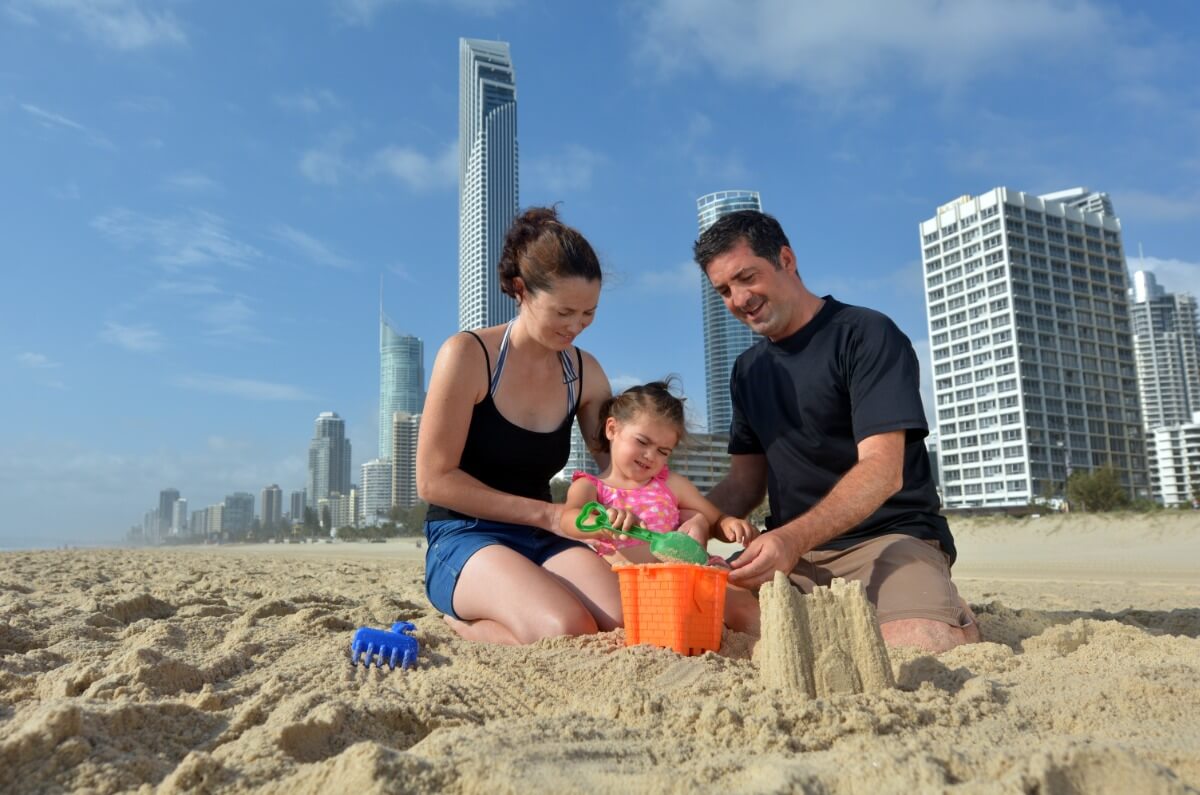
While the Queensland Maroons have trumped the New South Wales Blues on the footy pitch for another year, new Compare the Market research shows that Queensland would trump New South Wales in a financial State of Origin.
For a long time, there’s been a great debate over which State is better to live in, but after crunching the numbers, Compare the Market found that Queensland is the clear winner when it comes to a battle between budgets. The data shows Sunshine State residents could be $141.48 better off each week compared to their neighbours south of the Tweed border. That’s a difference of around $7,356.96 per year.
Compare the Market’s Chris Ford said that while both States will continue to feel the pinch as cost-of-living prices soar – cheaper electricity, public transport, rent, and groceries led Queensland to victory in this analysis.
“While we’ll have to see how things unfold on the footy pitch this Wednesday (May 31), Compare the Market data shows that Queenslanders currently have the upper hand over New South Wales when it comes to weekly living expenses,” Mr Ford said.
“Looking at rental prices alone, we know it’s around $119 more per week and $515.67 more a month to rent a house in Sydney. In addition, the latest statistics show that it costs Sydney homebuyers around $326,122 more than Brisbane homebuyers to purchase a home, according to latest averages”.
Please note: The following is a guide only, and actual costs may vary depending on individual circumstances.
| NSW (Sydney) weekly cost | QLD (Brisbane) weekly cost | Price difference | |
| Electricity | $32.5 | $32 | $0.50 dearer in QLD |
| Public transport | $47.1 | $43.4 | $3.7 dearer in NSW |
| Median rental price | House: $747 | House: $628 | $119 dearer in NSW |
| Fuel | $66.75 | $67.97 | $1.22 dearer in QLD |
| Groceries | $203 | $183 | $20 dearer in NSW |
| Car Insurance | $32.02 | $32.52 | $0.50 dearer in QLD |
| Total | $1,128.37 | $986.89 | $141.48 dearer in NSW |
*Methodology and sources are at the end of the release
“If Sydney’s rental prices don’t have tenants teetering close to the edge, the cost of groceries alone will,” Mr Ford said.
“On average, Sydneysiders we surveyed claim they’re paying $20 a week more for groceries than their Maroon rivals. That’s a little over $1000 a year more”.
According to the latest Compare the Market survey, more than a third of Australian respondents said the rising cost of groceries is having the most significant impact on their budget.
Almost a third of Aussies surveyed said their grocery shop is currently the biggest financial burden, ahead of mortgage repayments (24.1%), rent (15.2%) and energy costs (7.7%).
Conversely, the research found New South Wales residents surveyed are paying 50 cents more per week for their power bills.
But Mr Ford warned we haven’t seen the end of the energy crisis yet.
“With benchmark power prices predicted to surge by at least 20% this winter, now is a great time to ensure you’re not paying more than you need to for electricity,” Mr Ford said.
“Aussies should compare their current plan to see if there is more competitive deal available to them, to ensure they aren’t paying too much unnecessarily,” Mr Ford said.
The data also revealed it’s more affordable in Brisbane than in Sydney to commute to and from work every weekday – even with public transport prices increasing by 3% in South East Queensland on 9 January. In fact, Queenslanders travelling around 16km to and from work on the public transport network in peak times pay $3.70 less a week ($16.03 a month) than those in Sydney.
However, it’s slightly cheaper to travel to and from work every weekday in Sydney during off-peak times, coming in at a weekly average of $32.9 compared to Brisbane’s weekly off-peak average of $34.70.
“There are savings to be had in both States for those who can travel during off-peak times,” Mr Ford said. “While it’s not always possible, taking a few trips a little later in the morning or earlier in the afternoon could leave more money in your pocket.
“A couple of dollars may not seem like much a week, but these prices do add up over the year – especially with prices increasing across the board.”
On the flip side, Sydneysiders are paying $1.22 less per week for fuel. Those driving to work in Brisbane claim to spend $67.97 a week on average at the fuel pump versus a cheaper $66.75 in Sydney. Mr Ford said while many people in both States have no choice but to drive to work and park in the CBD, there were ways to save.
“Average fuel prices are pretty on par in both States, but we know that fuel retailers can, and do, set their own prices,” Mr Ford said. “Using Compare the Market’s Simples App allows you to see which retailer has cheaper fuel in your area and where you’re going to get more bang for your buck.
“Spending a few minutes finding a great deal is a simple way to save, especially with fuel prices recently soaring past $2.00 a litre in both States.”
Meanwhile, the analysis also found that car insurance prices could vary between the two States.
“Our March 2023 Bill Shock Survey found New South Wales drivers believe they pay less for their annual car insurance premiums, at an average of $138.74 a month compared to the Queensland average of $140.94,” Mr Ford said.
“It’s worth noting that prices can vary between insurers, as well as how often you drive your vehicle, where you park it, where you live and any insurance claims you’ve made in the past. This means two people in the same State could still be paying different prices. Always consider these factors when comparing.”
“We encourage all families – no matter which team you cheer for – to spend some time researching the best deals and cheaper insurance. Services like Compare the Market make it easy to look for options available to you, and hopefully ease pressure on the household budget. While Queenslanders are the winners in our analysis, there are opportunities to claw back cash across the country”.
For more information, please contact:
Natasha Innes | 0416 705 514 | [email protected]
Compare the Market is a comparison service that takes the hard work out of shopping around. We make it Simples for Australians to quickly and easily compare and buy insurance, energy, travel and personal finance products from a range of providers. Our easy-to-use comparison tool helps you look for a range of products that may suit your needs and benefit your back pocket.
—
Methodology
Public transport costs were determined using Translink and Transport NSW. Assuming one adult travels between 10-20km or two zones on the train to and from work every weekday.
Median house prices and rental data are accurate as of May and were sourced from Core Logic’s Home Value Index and Quarterly Rental Review.
Grocery, fuel, energy, and car insurance prices were sourced from Compare the Market’s March Bill Shock survey of 1,003 people, using data from New South Wales and Queensland respondents only.







